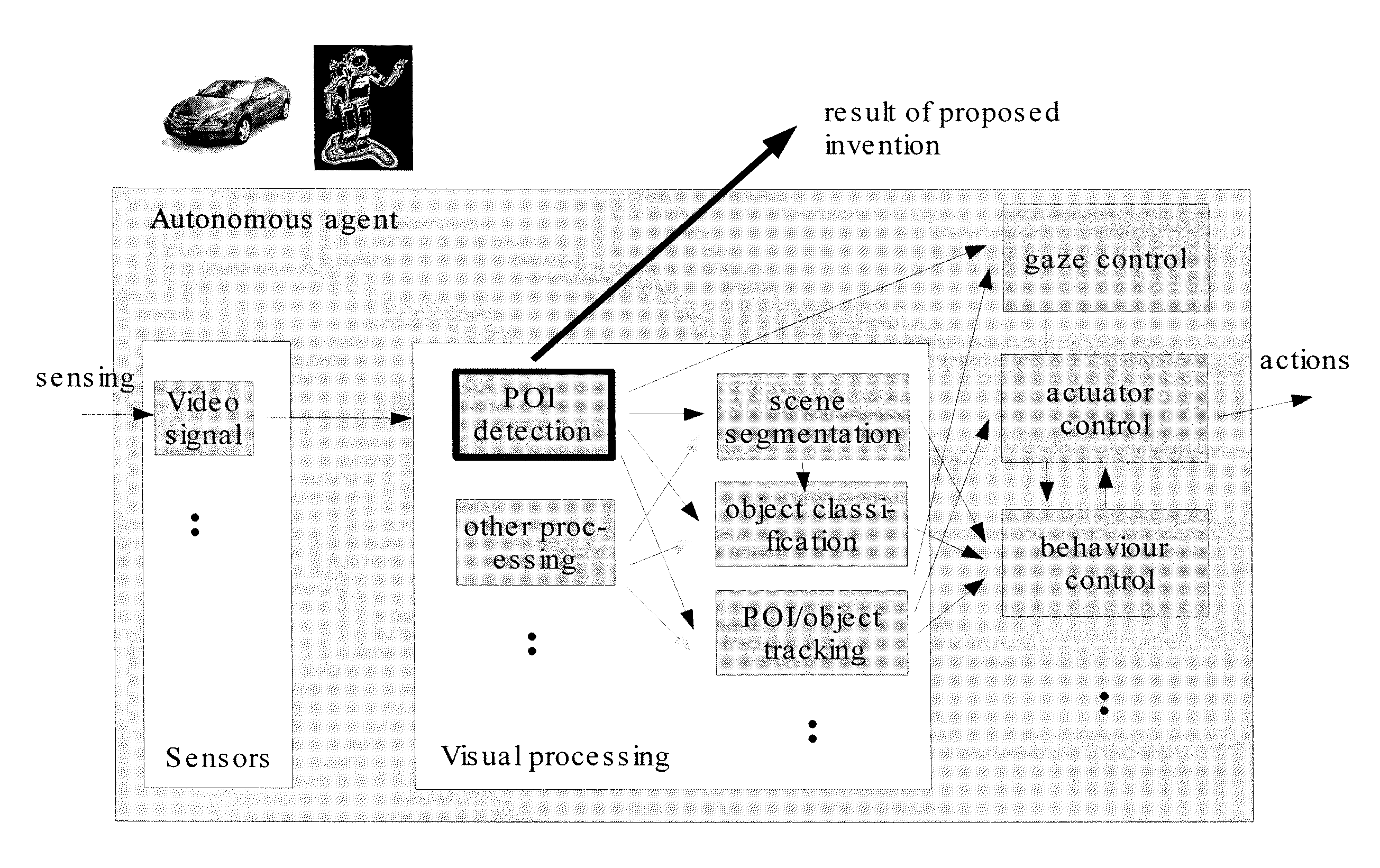Artificial cognitive system with amari-type dynamics of a neural field
- Summary
- Abstract
- Description
- Claims
- Application Information
AI Technical Summary
Benefits of technology
Problems solved by technology
Method used
Image
Examples
Embodiment Construction
[0035]FIG. 1 shows the initialization steps of a method according to an embodiment of the invention. The neural field is initialized in the space representation (SR) and then transformed to the FR. Equally, the interaction kernel is defined in the space representation (SR) before being down-sampled and transformed to the FR. (I)DFT stands for the (inverse) discrete Fourier transform.
[0036]The crucial issue in efficiently solving the given differential equation is, as was explained before, the computation of the convolution operation.
[0037]A discrete convolution may be computed much more efficiently if the neural field and the interaction kernel are transformed to the so-called “Fourier representation” (FR) by application of a transform known as the Discrete Fourier Transform (DFT). If more than one interaction kernel is to be convolved with the neural field, or if the same convolution kernel is repeatedly applied to the neural field, significant speed gains are possible since the tr...
PUM
 Login to View More
Login to View More Abstract
Description
Claims
Application Information
 Login to View More
Login to View More - R&D
- Intellectual Property
- Life Sciences
- Materials
- Tech Scout
- Unparalleled Data Quality
- Higher Quality Content
- 60% Fewer Hallucinations
Browse by: Latest US Patents, China's latest patents, Technical Efficacy Thesaurus, Application Domain, Technology Topic, Popular Technical Reports.
© 2025 PatSnap. All rights reserved.Legal|Privacy policy|Modern Slavery Act Transparency Statement|Sitemap|About US| Contact US: help@patsnap.com



